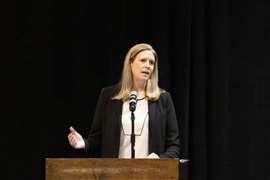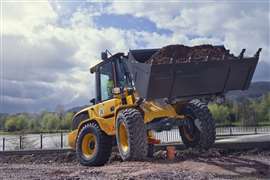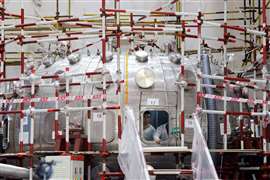Change for good: SC&RA news May 2020
17 June 2020
Transport companies can solve load rating problems on bridges by communicating with the state DOT and local bridge owners in the USA
During February’s SC&RA 2020 Specialized Transportation Symposium, Peter Vanderzee, of LifeSpan Technologies, and John Caya, of 5C Strategy, LLC, delivered a presentation titled “How Accuracy in Measurement Gives You an Advantage.”
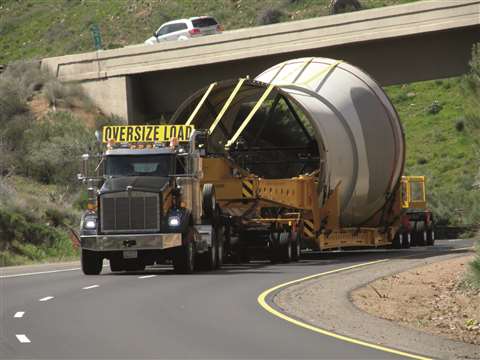
One component of the session spotlighted how new sensor technology is changing the game as it opens up more bridges to over size and over weight (OS/OW) transportation. Vanderzee has been presenting on this topic for the better part of fifteen years.
“The difficulty [in adopting tech] has been with nominal adoption rates by DOTs and local owners – counties and cities,” he indicated. “They can’t seem to get over the hump to pilot it.”
Vanderzee emphasised that DOTs are often unwilling to adopt new technology unless (and until) a governing body approves it. “But even then,” he acknowledged, “it’s an uphill battle, since it requires different approaches than standard operating procedure, and most government employees don’t embrace change.”
Caya added, “Every time there is a collision between an oversized load and a bridge, there’s the potential for serious injury or worse. On top of that, the liability and costs for a carrier for such a collision is potentially enormous. For a state DOT, any collision is expensive to repair, and very time consuming.”
Noting that truckers and their firms have been feeling the effects of unnecessary detours and differing state-by-state weight limits (driving additional costs) for more than twenty years, Vanderzee went on to say, “The fact that advanced-condition assessment technologies have proven their worth over the past twenty years by safely removing unnecessary load postings is distressing when owners, but especially regulatory and DOT engineers, won’t actively recommend use of the technologies to cut costs for truckers. It seems that DOTs see bridge replacements (much higher cost) as preferable to determining a way to extend the service life of an existing bridge, and remove unnecessarily restrictive load postings.”
Definitive diagnosis
Vanderzee sees the lack of vigorous adoption of new and better condition-assessment technologies by state DOTs and local owners as a major challenge, since it would “…reduce the need for increased funding that supposedly is essential for infrastructure renewal,” though he also stressed that bridge inspections will always be welcome.
“[Inspections] provide a very effective first line of defence, much like a blood pressure cuff provides a diagnostic clue for your doctor,” he said. “However, your doctor uses more accurate and definitive diagnostic tests when visual inspection (blood pressure cuff) can’t provide the essential information. So, why won’t state DOTs and local owners vigorously adopt advanced technology for bridge-condition assessment when their clients, the trucking industry, sorely needs cost relief by eliminating unnecessary detours?”
Moreover, said Caya, “Technology has become widely accepted and is very mature at this stage. For example, a number of state DOTs have been using mobile LiDAR for a number of years to inventory their bridge network and accurately measure vertical clearances. There are a number of qualified companies providing this service. Now, with the ability to also measure oversize loads with the same accuracy, it’s completing the loop. You now know exactly where the lowest clearance is on each bridge in a network – you know the precise measurements of your load. So, with the OS/OW routing software that is available, you can efficiently and safely route your truck through a state.”
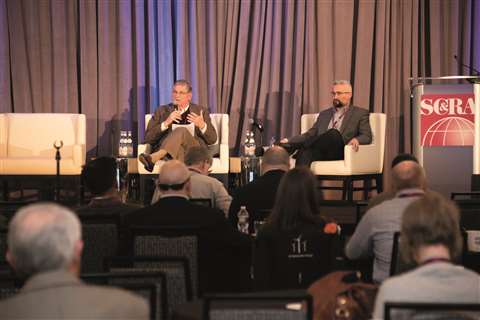
One major point Vanderzee likes to make concerns the difference between objectively and subjectively knowing the condition of a structure, and why OS/OW companies should be paying attention.
“Visual inspection provides subjective information about structure condition, i.e. ‘it doesn’t look good to me’,” he maintained. “Bridge inspectors are trained to not take chances with inspection; therefore, their default is to downgrade condition one or two levels, which is totally expected and never questioned. However, purposeful downgrading results in too many bridges being load restricted, which causes increased costs for OS/OW companies due to detours. Subjective downgrading also increases funding demand for bridge replacements, which in many situations are unnecessary.
“The difference between subjective visual inspection and objective condition assessment is rooted in accuracy and timeliness of structural performance data. So, why don’t owners take the next step and use sensors to get accurate and objective data, supporting a definitive, accurate and objective diagnosis of the problem before spending an abundance of limited funds on unnecessary replacements? Objective performance data also allows engineers to reduce unknowns and make recommendations with a solid basis of objective data.”
Caya noted that technology available today, “…makes it much faster, accurate and safer to inspect bridges for accurate clearance or ensure that loads are properly permitted with the accurate size. The ROI will be in speeding up the process and also reducing the chance for collisions. Many state DOTs are familiar with the technology and, for those agencies that aren’t, I’ve found that once they discover its capabilities, they see the benefits and start thinking about how it improves existing methods and workflows.”
Effecting change
As for how transport companies can solve load-rating problems by communicating with both state DOT and local or rural bridge owners – and why that’s so important – Vanderzee explained, “Step one is getting a DOT or local owner to accept that the technology works. Step two is getting them to commit to a pilot project with several bridges that demonstrates how effective the technology can be. Step three is getting them to design and operate a long-term, full-scale programme to reduce the number of posted bridges in their state or locale. Step four is executing that long-term programme, substantially reducing the number of problematic bridges and then reaping the financial benefits for their taxpayers.”
Caya also pointed out that it starts at ground level. “I think for OS/OW or over-the-road companies, it comes down to how well new technology will improve ‘my workflows, my current methodologies and my company overall.’ Being open to and embracing technology that can replace more time-consuming and expensive manual methods is a great opportunity for companies. The same workflows can still be used, but they are streamlined and improved upon. In a relatively short time, there is significant cost savings and return on investment.”
Vanderzee agreed. “The benefits are numerous. Lower costs for truckers and trucking firms as many detours are eliminated; less fuel use – lower carbon dioxide emissions. Less collateral damage (fewer trucks) on bridges with no known structural problems. Less congestion, especially if detours take truckers on highly trafficked routes. And in many cases, the bridges load tested are no longer candidates for replacement.”
As for what SC&RA members can do right now to effect the change he thinks is needed, Vanderzee urges members to, “…call or write your state DOT commissioner; ask why they aren’t deploying this technology across the state in a long-term programme. Tell them it’s time to adopt proven technology. Offer to help a state DOT purchase one or more sensor kits (with training). A ten-thousand-dollar grant covers almost half the cost for their first sensor kit. Call or write your state representative or senator and ask them to determine why the state DOT isn’t taking full advantage of this technology. Call or write to members of the U.S. House Transportation and Infrastructure Committee, and ask them to incorporate incentives to use advanced condition assessment technologies into the next highway bill due to start this September.”
Caya admitted that, while everyone is busy and has deadlines they’re trying to meet, “…it can be hard to see how introducing a new technology can improve workflows and improve the bottom line. For SC&RA members, I think making the time and being open to seeing new methods and technology is a great start in effecting change and expediting progress across the industry.”
PHOTOS
Precision Heavy Haul, Inc..jpg
Transport companies can solve load rating problems by communicating with state DOT and local bridge owners
Peter-left and John-right.jpg




